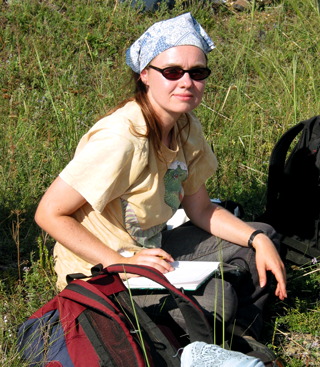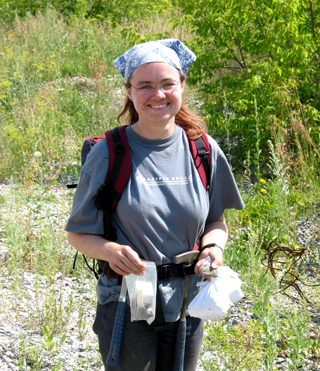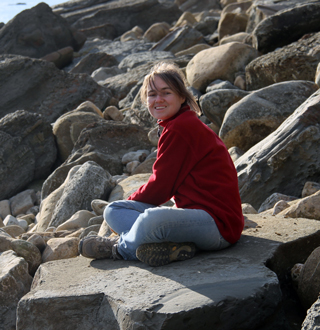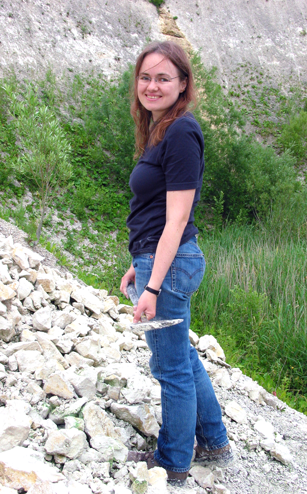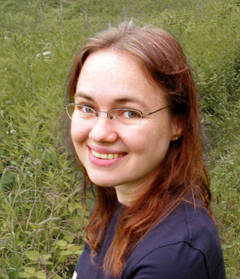
Mena Schemm-GregoryPlettenberg (D), 11 November 1976 - Coimbra (P), 8 July 2013
Mena has been, and is without any doubt, a point of reference for all our young, and otherwise, „brachiopodologists“ for her devotion to paleontology and even more remarkably for the results that she achieved. Her curriculum, which could make even some older researchers envious, speaks for itself - see http://www.uc.pt/fctuc/ID/Geo/Sedimentary/Dra_Mena_Schemm-Gregory and She had reached an enviable knowledge of the most common aspects related to the study of brachiopods, such as taxonomy, phylogeny, evolution, biostratigraphy and paleobiogeography. She was also a master of 3 dimensional computerized reconstruction of brachiopod internal structures, a tool that probably she introduced first to us „brachiopodologists“, and that among other things led to her being cited in the Portuguese edition of National Geographic. She was also in the process of increasing her repertoire of tools; in fact we were working together on relatively new aspects of brachiopod investigation: geometric morphometry and geochemical analyses. She achieved all this in spite of suffering from type-1 diabetes, which caused her no small problems. However she regularly overcame difficult moments to collect brilliant rewards. One time while me and her we two was joking about her impressive CV, we managed to assigned her the nickname of “Reina de los braquiópodos” or "Rainha dos braquiópodes" (Spanish and Portuguese for “Queen of brachiopods”). I’m sure that if she would have had the possibility to continue, we brachiopodologists would have benefitted immensely, and probably that nickname would have become known worldwide. Noticeably she made the decision to dedicate herself exclusively to paleontology relatively late. Until 2004 she was still continuing her studies of philology too, deciding to interrupt them only because she did not like the topic of the degree thesis that was suggested to her. However she never completely gave up her interest in languages. As an example, two years ago she made some progress with Russian language before the meeting of the Sub-commission on Devonian stratigraphy in Siberia. Her wide language skills have often provided an opportunity for funny multi-language conversations. Mena had been brilliantly finishing her post-PhD position at the University of Coimbra (Portugal) with the help and supervision of Prof. Maria Helena Paiva Henriques. While there she had to fight against problems linked to the economical crisis and to the problematic bureaucracy. I had the pleasure and the honor of meeting her during her first visit to Plymouth University in May 2009. Although later we figured out that we had some contact at the International Brachiopod Congress in Copenhagen on 2005. Also on that occasion she was victim of a diabetic crisis. Since that time we became very close friends, remaining in touch almost daily, sending each other postcards, and doing some work and travelling together. I would have a lot of anecdotes to tell but because she was very discreet about her private life I will not betray her will; even if in those two weeks almost each second spent together continue to come to my mind. However in my opinion it is nice to share with all of you some moments linked to the brachiopods and to our dreams of relatively young researchers. One time we were talking about the possibility of seeing a brachiopod shape cloud, a “brachiopodo-cumulus” as she proposed. Well during my last fieldtrip in Estonia, in June 2013, I would have finally photographed a possible “Spiriferina-cirrus”. Regrettably I did not have time to show it to her. I was trying to do just that from Budapest right in the week in which she was fighting in the hospital against her disease. We would also fantasize about merging our dreams, to have an extensive collection of brachiopods and to have a huge library in which to collect all the literature about brachiopods, in the form of a museum/research centre dedicated to the study of brachiopods, or “our friends”, as we used to call them. She was already at good point with this project: I still have in my mind the impressive amount of articles and samples perfectly organized in several tens of boxes still hosted in the garage of her parents, Dieter & Waltraud, in the small town of Papiermühle. During our visit to her parents in Germany in December 2011, we visited the Atta-Höhle (Attendorn dripstone cave) in Attendorn. She was my personal guide, and at the end of the cave trip she showed me some Devonian brachiopods, the same that she studied during her degree studies. Maybe it was destiny that I had the opportunity to relieve those nice and unforgettable moments: trying to commemorate her in some way, 9 days after the tragic event, I went to visit the Pálvölgyi cave in Budapest and at the end of the trip the guide showed me a fossil of an echinoid. Finally I would like that we all remember her from the time of our fieldtrip in Eype (Devon, SW England) in October 2010 with our friend and colleague Kevin Page: her face was literally full of joy, with shining eyes and very large smile, while we were carefully extracting tens of little early Jurassic brachiopods from the matrix. This scene was the clearer demonstration of how much she loved her job and “our friends” the brachiopods; and I’m sure many of you have seen the same sometime during her numerous field trips. 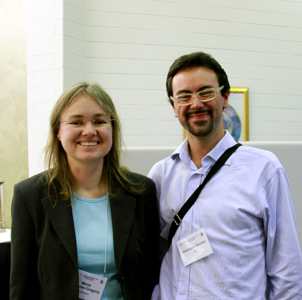
Joining her family, her friends, her colleagues and all the people who loved her, I think I can say: Dear Mena, Tartu, 24 July 2013 : Giuseppe Buono
|
